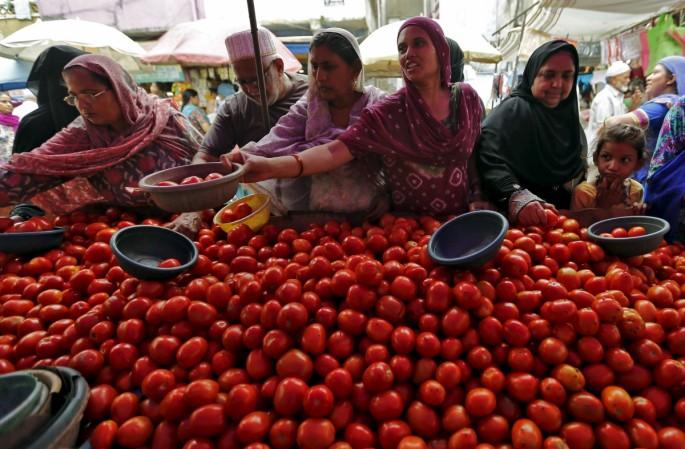Compared to last year when tomatoes were dumped on roads due to crashing prices, the skyrocketing prices this year have reached Rs 100 per kg in the state capital, significantly impacting the residents of Bengaluru and other areas in Karnataka.
Tomatoes being essential ingredients in the local cuisine, and the middle and lower-middle-class households are now compelled to prepare dishes and meals without this vital component. Conversely, tomato growers in the state are delighted with the newfound profitability they are experiencing after a prolonged period of lower prices.

Top-quality tomatoes are currently priced at Rs 100 per kg in malls and supermarkets, while the lower-quality, third-grade tomatoes available in local markets, where the majority of households shop, range from Rs 60 to Rs 80 per kg. Merchants predict that if the current trend continues, prices will soon reach Rs 100 per kg in local markets as well.
Market sources have revealed a significant decline in tomato arrivals at the Kolar Agricultural Produce Marketing Committee (APMC) this season, which is a major supplier to Bengaluru. While the market typically witnesses 300 to 400 loads of tomato arrivals, this season it has dwindled to a mere 100 loads. The first-grade tomatoes are being exported to the states of Kerala and Gujarat.

Anticipating tomato arrivals from Nasik, market sources attribute the drop in tomato production to a leaf disease. Nevertheless, farmers who managed to achieve a bountiful harvest are pleased with the profits they are reaping this season. Recently, farmers had staged protests against the drastic decrease in tomato prices by dumping their entire crop on roads.
To cope with the soaring prices, middle and lower-middle-class families, who manage their households on tight budgets, have resorted to substituting tomatoes with tamarind in their food preparation. Even hotels have ceased using tomatoes, with many removing tomato soup from their menus.
Tomato crop in Karnataka
The tomato crop in Karnataka has been facing various challenges and fluctuations in recent times. Factors such as weather conditions, disease outbreaks, and market dynamics have had an impact on tomato production in the state.
One significant issue affecting the tomato crop in the state is the occurrence of diseases, particularly leaf diseases that can severely affect the health and yield of tomato plants. These diseases can result in a decline in production and quality, leading to reduced availability and higher prices.
Additionally, weather conditions play a crucial role in tomato cultivation. Unfavorable weather patterns, such as excessive rainfall or drought, can negatively impact the growth and development of tomato plants. Extreme weather events can damage the crop, affect pollination, and result in yield losses.
Market dynamics
Market dynamics also influence tomato production in Karnataka. Fluctuations in demand and supply, changes in consumer preferences, and price fluctuations can affect the cultivation decisions made by farmers. When market prices are low, farmers may reduce tomato cultivation or even resort to protests to draw attention to their grievances.
Despite the challenges, Karnataka remains one of the major tomato-producing states in India, especially in Kolar region which supplies a significant portion of tomatoes to Bengaluru and other parts of the state. Whenever tomato prices soared, the impact ws felt immediately on inflation of other daily essentials.
The trend has not only hurt the economically weaker section of the society but has lately been cited to impact the savings rate of the well-off. The biggest impact of inflation is that it affects the purchasing power of the fixed income groups as they can buy less compared to what they were buying earlier.
(With inputs from IANS)














